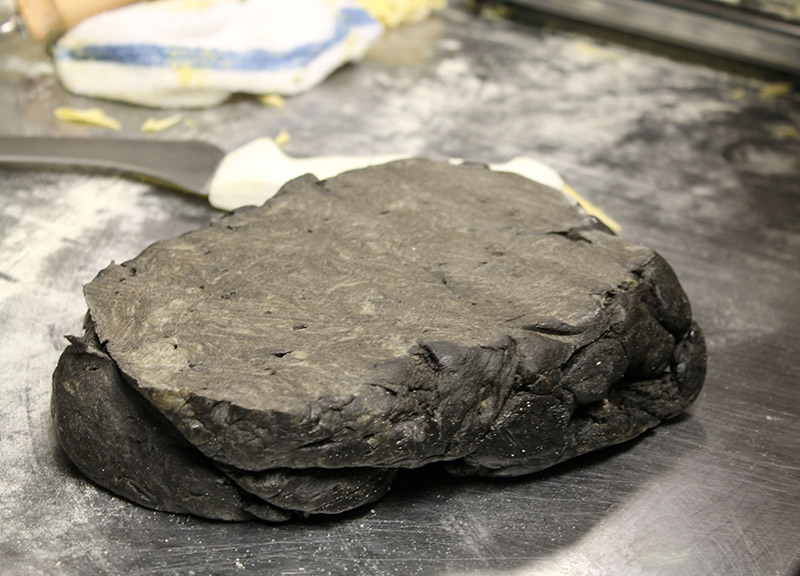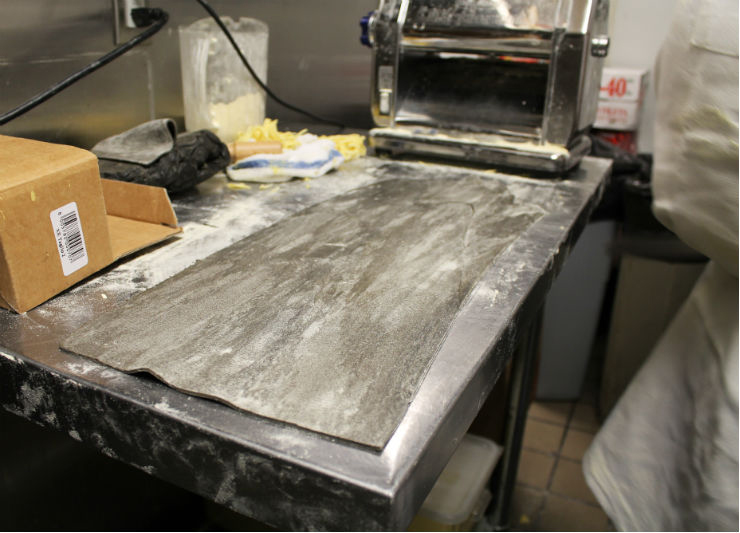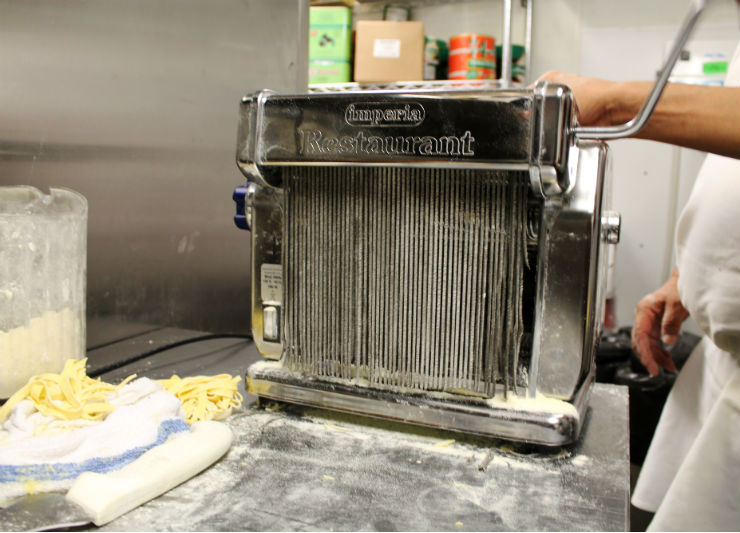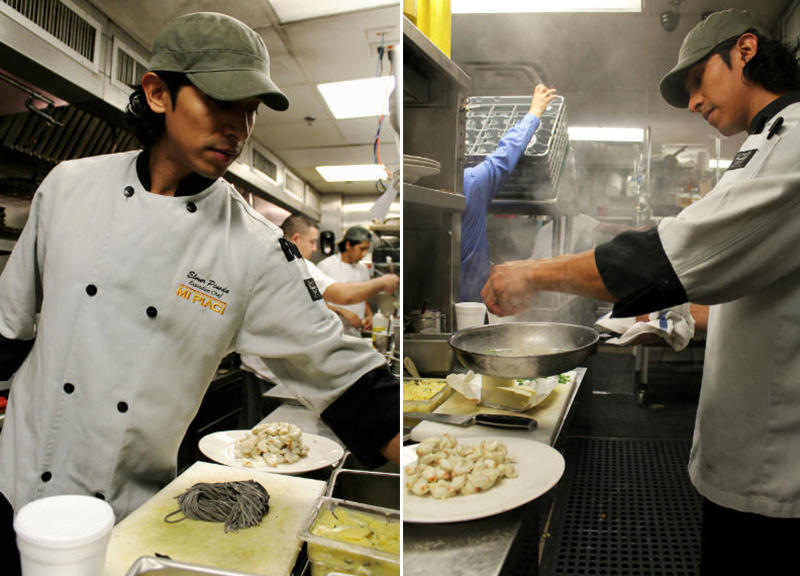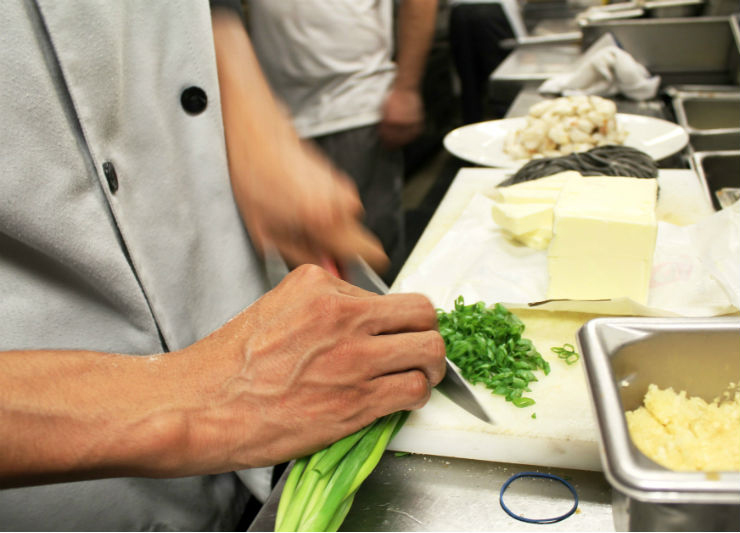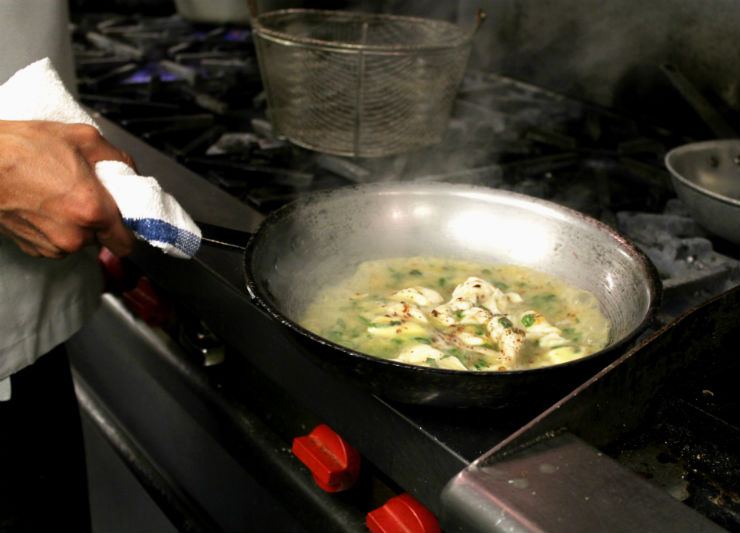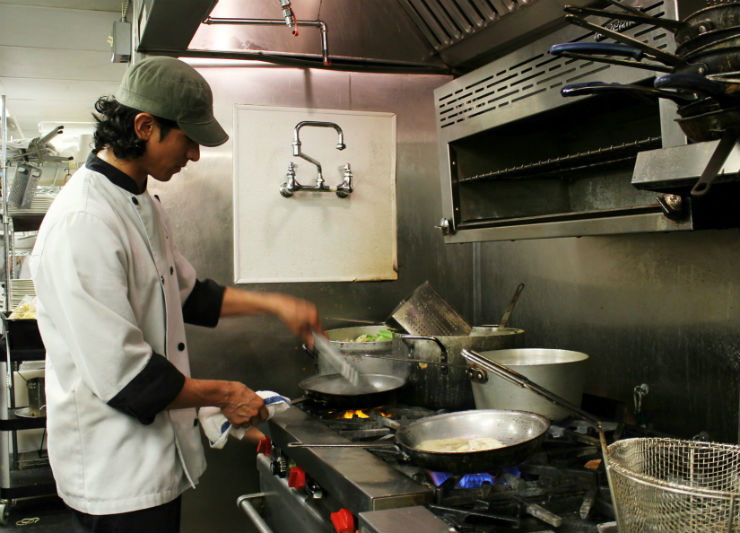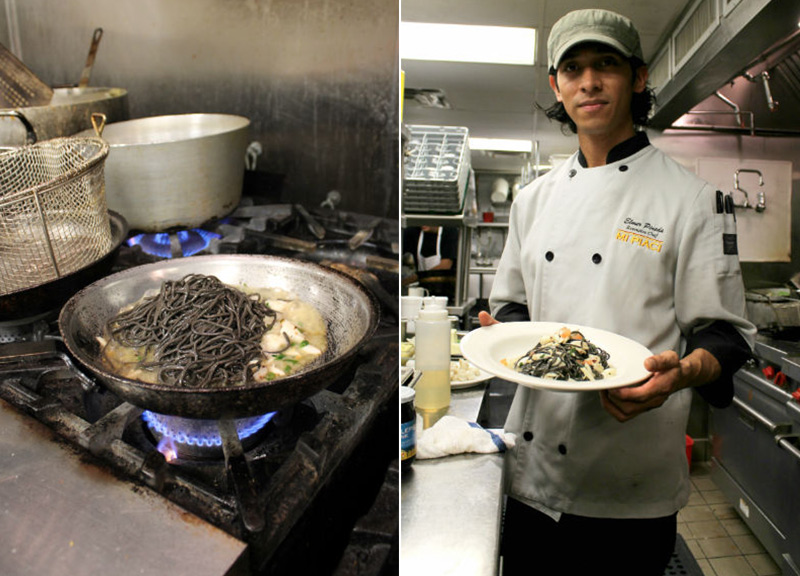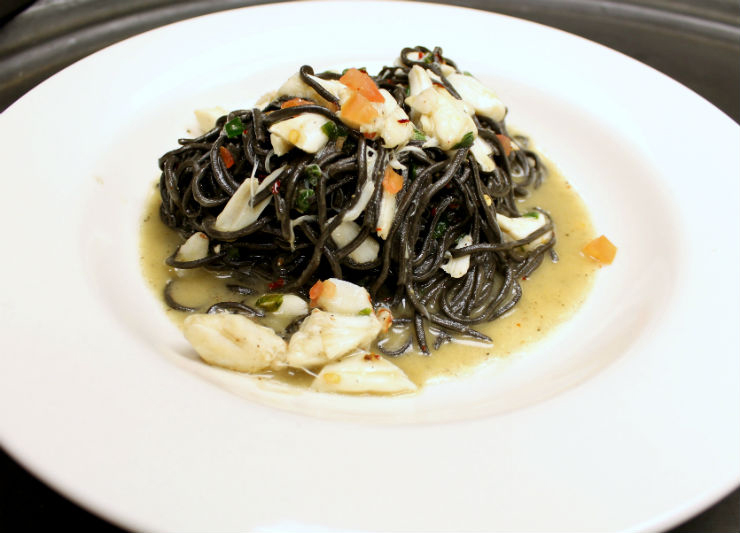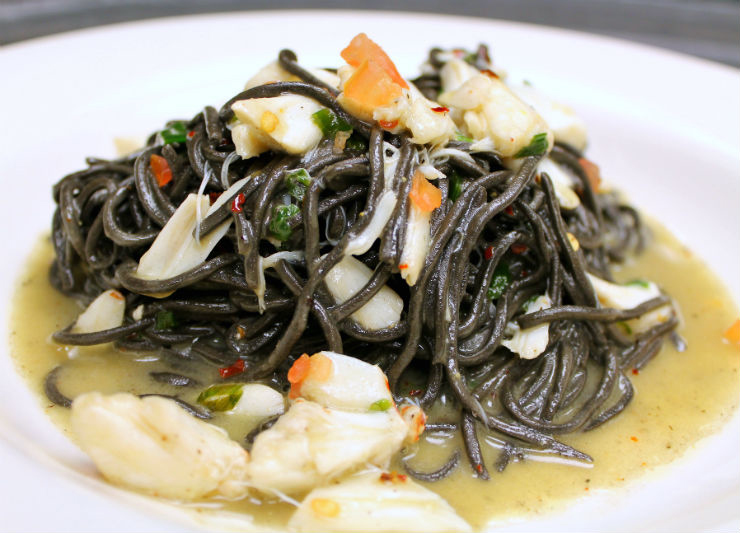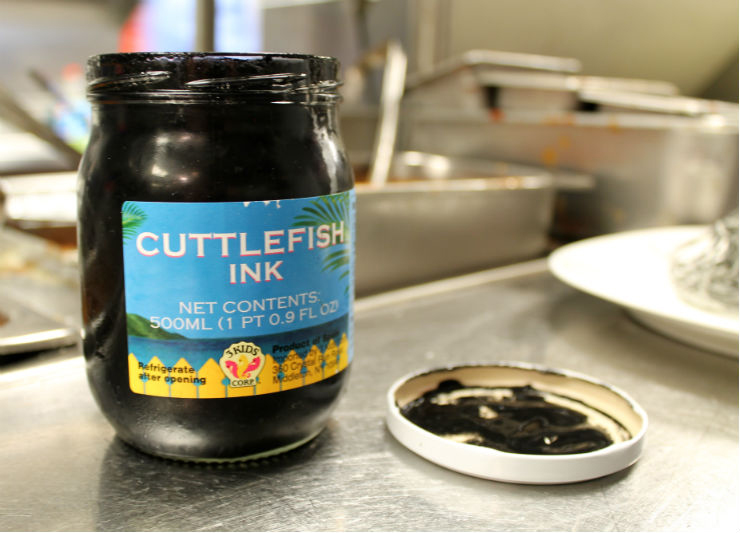Mi Piaci's Elmer Pineda Schools Us On Squid Ink.
Welcome to Wild Things, where we dive into the kitchen of some of Dallas' most daring chefs to find out what wild, interesting ingredients these food artists are playing with. Whether it’s a taboo ingredient or just a food item you wouldn't think you'd find at a certain establishment, it’s about time someone highlighted the unconventional or unexpected. Here, we invite you to open your mind — and your mouth — to the wild things in Dallas.
Mi Piaci. Daring Chef:
8411 Preston Road.
University Park.
Considering that he first came to the United States at age 16 and without knowing how to speak a lick of English, Elmer Pineda is doing remarkably well for himself these days.
Pineda was born Las Juntas, Mexico, a small town of about 1,000 people and made the journey to Texas as a teenager to find a better life. In 2000, he started working as a dishwasher at the now-defunct Uptown eatery, Il Sole, and Sonia and Brian Black, owners of Il Sole and Mi Piaci, saw potential in Pineda and took him under their wing, helping him learn English, get into culinary school and train with renowned chefs all over the country.
After working as Mi Piaci's pastry chef and sous chef, Pineda became executive chef of the well-received Italian restaurant Mi Piaci just last year. His love of cooking, research and reading encourage him to develop new dishes using traditional, unfamiliar ingredients.
In the following interview, Pineda tells us about the wildest ingredient in his kitchen — an ingredient that is used as a defense mechanism in the natural world and as some wicked food coloring in the culinary world.
What is the wildest ingredient in your kitchen?
Squid ink. Maybe it isn't wild. Maybe it's just weird. Squid ink refers to the dark cloudy liquid that cephalopods release as a defense. It is very black — just a small amount is enough for most dishes and, like any ink, it can stain easily. It's most popular in Italy and Spain, and its unique appearance and origin make it a gourmet delicacy in many other countries. We use it in our kitchen to make squid ink pasta.
What does it taste like?
Squid ink will add a slightly salty flavor to any dish and can have a strong iodine taste if used excessively. Most people refer to the taste as merely salty. It's not a strong or fishy flavor. It's very low in calories and used more as a condiment, adding just a teaspoon or two in most dishes. The texture is soft, like butter.
Why did you decide to feature this wild ingredient?
Spain and Italy both use this influence from the coastal area. It is to accentuate the seafood flavor and experience. I wanted to bring this ingredient into our cuisine, as well. I use it for my Spaghettini Neri, which is a house-made black spaghetti with butter-poached blue crab and chili. When most people try it, they absolutely love the taste that the combination of the ingredients brings. And the black color just really brings it all together.
What makes having this item in your kitchen special?
It's unusual, but beautiful and fun to eat. Come on, how often do you get to eat black pasta? The taste and texture of the ingredients make this dish amazing. Some people are hesitant to try it at first because they see “squid ink” and think that is just too weird. But it truly is a delicacy when I mix it with my pasta. When they do taste it, they say it's fabulous. Most people do not use squid ink in the States to add color to home-made pastas. But it truly is [an] authentic Italian [cooking method].
The jar of Spanish squid ink that Pineda uses to make black spaghetti.
Black spaghetti pasta dough. Fresh pasta is made in-house every day.
Pressed black spaghetti pasta dough.
Pineda uses an Italian-made pasta machine to make fresh spaghetti.
Pineda preps ingredients in his kitchen (left). He usually has five cooks and his sous chef in the kitchen with him. Pineda works a pan containing butter, scallions and chopped garlic off the burner (right).
Pineda thinly slices fresh scallion. He says he likes to incorporate fresh, bright ingredients to give the dish color.
He adds blue crab and red chili flakes to the butter mixture.
The executive chef tosses the black pasta, which has been boiling, while the butter-poached blue crab rests in another pan.
Pineda tops the butter-poached blue crab with cooked black spaghetti (left) and poses with his dish (right).
The Spaghettini Neri is topped off with fresh tomato.
A close up of the luscious dish, $22.